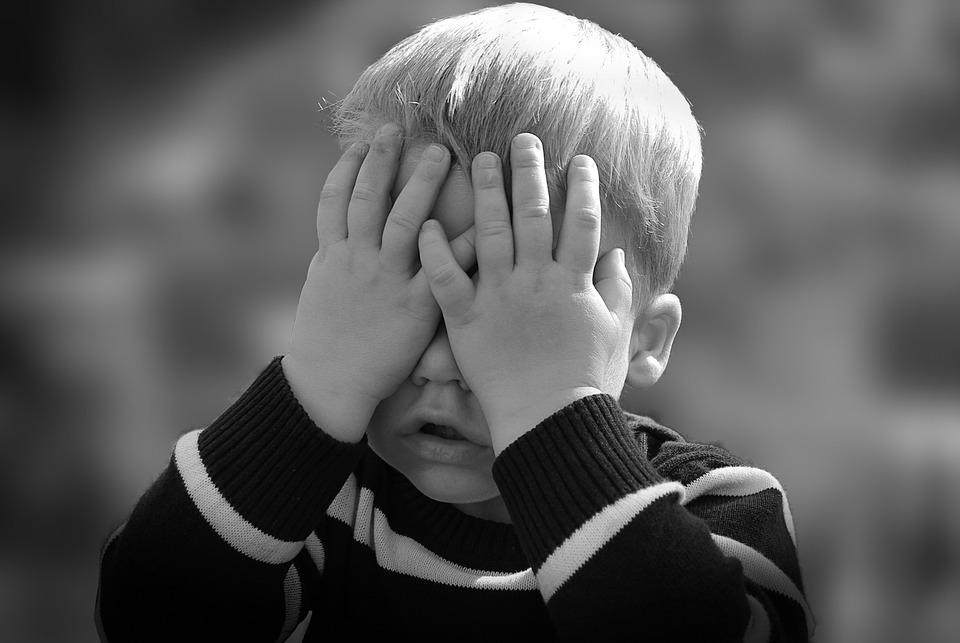By Elana B. Multi-award-winning writer, advertiser, speaker and internationally published author
Share on: Facebook; Twitter; Tumblr
When the sun is shining brightly and laughter fills the air, life is sweet. When the laughter comes from your children playing together, enjoying and entertaining themselves, it’s a slice of heaven. So when a bloodcurdling scream erupts and shatters the blissful afternoon, the first reaction parents generally feel is fear. Did one of the kids fall off the jungle gym? Did someone grab one of the kids? All senses go into overdrive and then when you spot only one of your children running toward you with a look of terror on his face, the gut-wrenching dread can seem unbearable. When it turns out that your child is running from his sibling, scared that he is going to get killed, it is hard not to have this knee-jerk reaction:
“Don’t do that to me again. I was terrified that something horrible had happened to you. You two have to learn to get along and workout your problems.”

That response or any that resonates with the frustration of sibling aggression or rivalry is common in many families. Everyone’s emotions are on overdrive. Despite the chaos, it’s the parents turn to step in. How parents handle the situation can make a huge difference regarding how your children learn to act or react to an upsetting, angry, or confrontational situation.
Although sibling squabbling is a rite of passage; brothers and sisters argue and roughhouse; they steal each others clothes and toys; they sneak into each others Halloween candy bags. Just because it is common does that make it normal? Or could early childhood aggression be a sign of something more significant such as abuse, mental illness, even hearing problems?
Mediating squabbles and angry outbursts is par for the course as a parent; however, although peer bullying has increasingly become a recognized problem and the focus of preventive efforts, sibling bullying has historically been viewed as “benign and normal and even beneficial” for a child’s social development and ability “to learn to handle aggression in other relationships,” according to the study, in the July issue of the journal Pediatrics. However, there is evidence that “shows that sibling aggression is linked to worse mental health (for the victim), and in some cases it’s similar to what you find for peer aggression,” says lead author Corinna Jenkins Tucker, an associate professor of family studies at the University of New Hampshire in Durham.
Even mild acts of sibling aggression can be just as detrimental as the bullying that many children face at school. So how can parents tell if their child or children have physical or psychological problems, or that their sometimes angry interactions are not just common disagreements? “Stop it,” one sibling says, “You are bugging me, demanding that everything go your way!”
[adinserter block=”17″]
Example of normal: It is common for brothers and sisters to argue or get annoyed over who gets what toys and privileges, such as picking TV shows, or who gets to sit in the front seat when driving to school or sports.
Example of possibly not normal: (aggression with possible mental illness). Your child’s aggression is aimed at intentionally hurting a sibling physically or psychologically, such as finding enjoyment or smirking when their sibling is hurt physically or emotionally. Repeated behaviors of these types of aggressive actions are also a red flag.
If you notice your child acting in such a manner, pay closer attention. Look for signs that this aggression is predominantly directed at one sibling or which, if any, of your children exhibit this type of behavior. Most import, who is the “main” culprit of aggressive behavior? Some signs of aggressive or bullying types of behavior can be physically, emotionally and mentally debilitating to your child that is on the receiving side of this treatment.
So what do you look for?
Bully/Aggressor
• Random acts of aggression
• Constantly wanting to bully or make the other child submissive
• Derisive comments
• Unwillingness to admit fault
• Enjoyment gained by negative and aggressive behavior
• Taunting and tormenting sibling repeatedly for pleasure
Submissive
• Does not respond to being picked on
• Cries but does not fight back or use words to interject feelings regarding the behavior that is being exhibited
• Cries but does nothing to resolve the issue
• Hides the problem afraid to tattle
• Becomes more quiet and subdued. Avoids siblings and interaction with peers
If you notice any of these signs, it is a good idea to seek counseling help for both children; the “bully” or “aggressor” and the “submissive” may be heading down a more destructive and troubled path.
Once the issues are addressed you should see progress. Sibling rivalry is almost impossible to eradicate because it is basic human nature to have an opinion and these opinions do not always coincide with a sibling’s or other peers thoughts or views. For that reason, although progress may be slow, as long as it steadily improves, the greater the chance for success in helping your family as a whole.
Hitting the ball so you get on first base by addressing the issue against bullying is great. Batting a second hit against aggression is fabulous. Batting a line drive against constant submissive behavior helps keep your bases loaded against trouble. But we need that home run to help solve the problem.
For parents, actively watching and seeking ways to guide children’s behavior toward the greater good of the family and society as a whole is the goal; this awareness and step-taking process to rectify the problem of sibling aggression is a definite home run for parenthood.
So no matter what stage you find your children or family in, the sooner you work toward solving the problem of aggressive, bullying or submissive behavior, the sooner you will see a team that can’t be beat. Making your family a positive and productive team is the World Series of parenting.
Consult your doctor before using any health treatment, plan, or activity — including vitamins, herbal supplements and natural remedies. Also, tell your doctor if you have a serious medical condition or are taking any medications. The information presented here is for educational purposes only and is in no way intended as a substitute for medical advice or counseling.
About the author: Elana B. is an award-winning writer, speaker, and internationally published author. As a writer and ghostwriter she has written hundreds of stories from shorts to screenplays. As a healthcare enthusiast she has studied nutrition, and over-all health and wellness.
A gifted storyteller, Elana B.’s new children’s series, Too Terribly Busy and the “Too Terribly” Series of books, teach in a fun, creative way some of the most important lessons in life. Through this entertaining series of books, children will learn morals, manners, how important it is to achieve goals, as well as conflict resolution. Sneak peek of the first story in the new series: TooTerriblyBusy-SneakPeek1.
More Elana B. and other related articles:
Signs of Depression and How to Feel Good Again
30 Minutes of Physical Activity
The Feel Good Way to Better Health…Endorphins
Medical Conditions and Triglycerides
5 Tips to Help Improve Relationships
Natural Ways to Reduce High Blood Pressure
Other great articles:
8 Benefits of Regular Exercise
Overwhelmed – 7 Things You Can Do to Calm Down
The Writer’s Life and How to Make Money as a Writer






